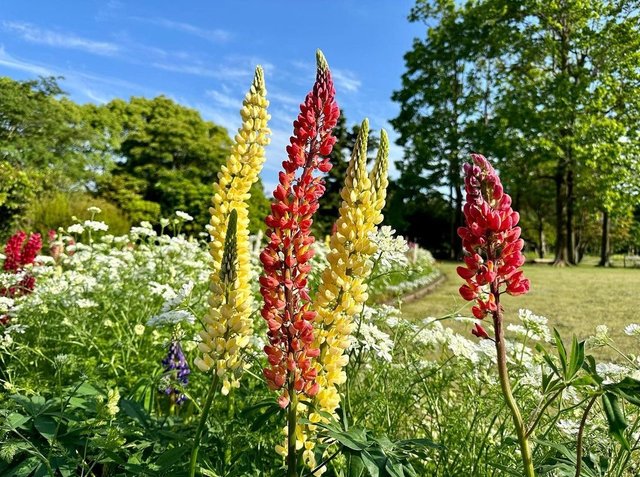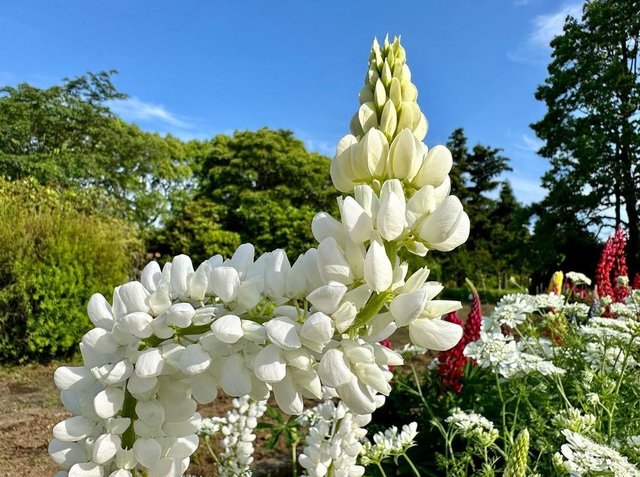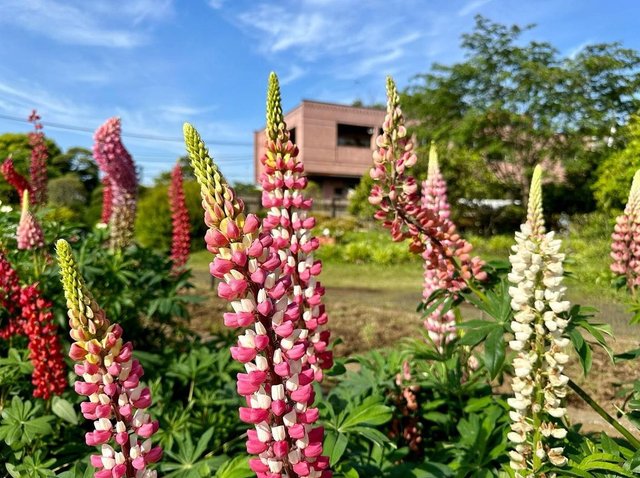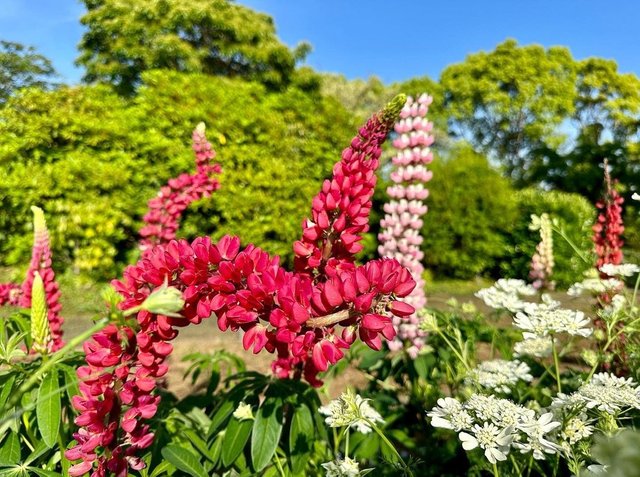



In the realm of wildflowers, the Large-leaved Lupine stands tall as a symbol of natural elegance and resilience. With its striking clusters of vibrant blooms and distinctive foliage, this species captivates both seasoned botanists and casual observers alike. From its ecological significance to its cultural symbolism, the Large-leaved Lupine embodies a myriad of fascinating traits that warrant admiration and study.The Large-leaved Lupine, scientifically known as Lupinus polyphyllus, belongs to the Fabaceae family, commonly referred to as the legume, pea, or bean family. Native to North America, this perennial herbaceous plant is renowned for its showy, upright racemes of colorful flowers, which can range from hues of blue, purple, pink, and white. The palmately compound leaves, characterized by numerous leaflets arranged like the fingers of a hand, lend the plant its distinctive appearance, while its robust stem provides stability and support amidst varying environmental conditions.
Beyond its aesthetic appeal, the Large-leaved Lupine plays a vital role in its ecosystem. As a nitrogen-fixing plant, it forms symbiotic relationships with nitrogen-fixing bacteria, enriching the soil with essential nutrients and contributing to soil fertility. Moreover, its deep taproot system aids in soil stabilization, erosion control, and water retention, making it a valuable ally in habitat restoration and conservation efforts. The flowers of the Large-leaved Lupine attract an array of pollinators, including bees, butterflies, and hummingbirds, thus facilitating cross-pollination and supporting biodiversity.
Throughout history, the Large-leaved Lupine has held symbolic significance in various cultures. In some indigenous communities, it is revered for its medicinal properties, with extracts used to alleviate ailments ranging from respiratory issues to rheumatism. Additionally, its resilient nature and ability to thrive in diverse landscapes have led to its association with perseverance, adaptability, and renewal in folklore and literature. Artists and poets often draw inspiration from its graceful form and vibrant colors, capturing its essence in paintings, poems, and other creative works.